When Barry the bull arab dog puts his nose to the ground in the Granite Belt, he’s not hunting Easter eggs.
The handsome fellow is an integral part of the annual truffle harvest that takes place on a family farm known as The Folly in Ballandean.
For his truffle-hunting skills along the rows of 2250 French oak trees in two growing areas, Barry is rewarded with cooked chicken (although he often also tries to sneak a snooze).
And after a decade-plus of planning and research, combined with patience and hard work on Queensland’s largest commercial black truffles production, his owners hope the venture will soon start paying off for them, too, leaving a legacy for generations to come.
The dream began with Mike and Judy Egerton and the first 450 trees planted in 2016.
Daughter-in-law Maple takes up the story on a stroll around the truffle trees on a second plot known as the Family Block.
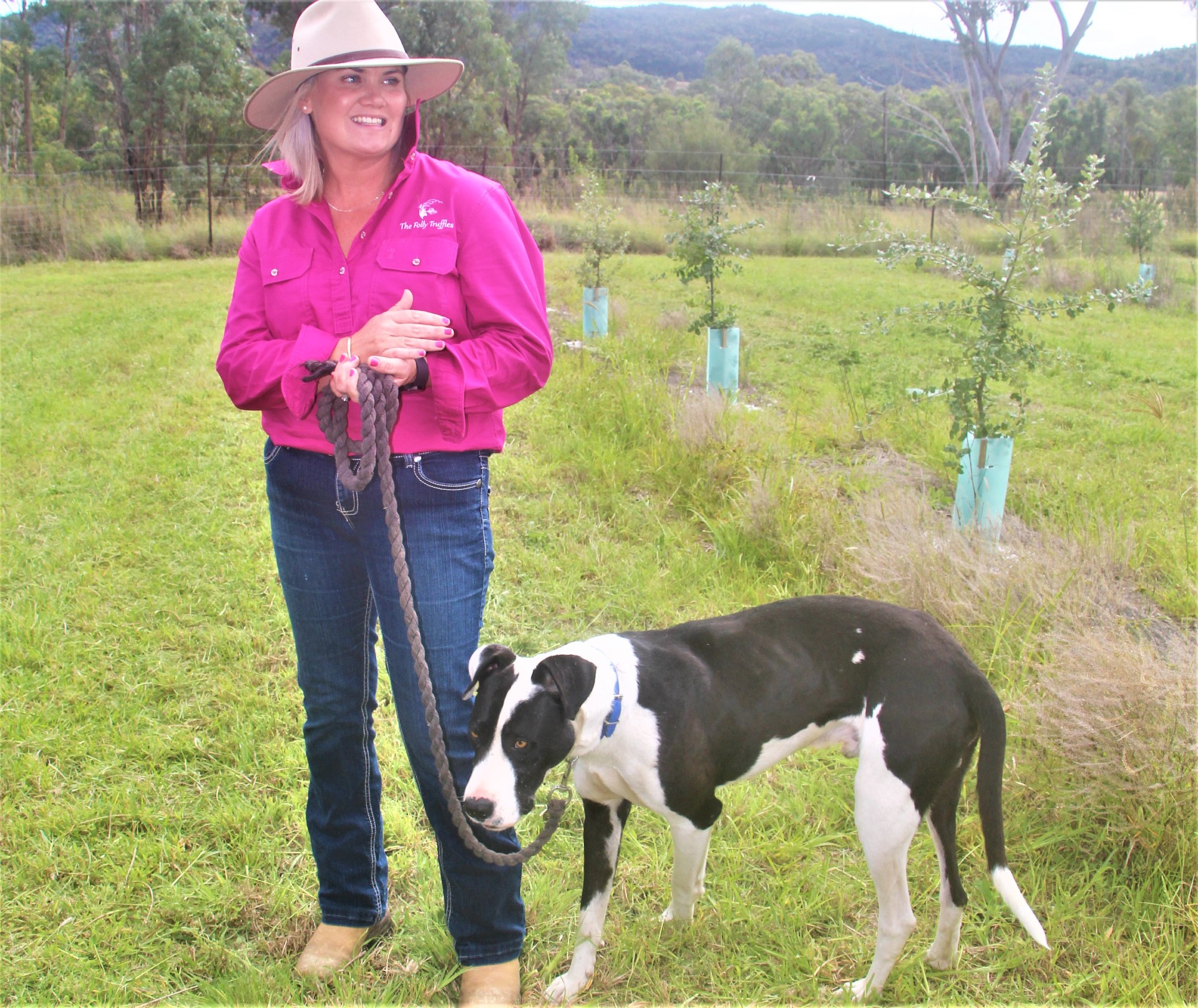
“We moved to The Folly in 2011 following a few years of research into truffles, truffle-growing conditions and weather patterns, because my family had some grand plans of retiring to the south of France,” she says with ever-faithful Barry by her side.
“But the practical aspect of that would have meant that they wouldn’t be able to see their grandchildren as much as they’d like.
“They came up with a plan to grow truffles in their retirement and asked if we would be prepared to move there and manage the farm for them.
“I was a musician in Brisbane … and (husband) Ben was a timber salesman. The idea of a tree change really appealed to us.
“We purchased this (property) in 2017 because we were excited by the idea of growing truffles.
“We are slaves to our work. And we thought, ‘450 trees isn’t enough – let’s buy another 1800′.
“That was before we even knew we could grow truffles. So, we were really gambling on the idea.”

Maple assures visitors the cool, high climate of the Granite Belt – a region centred on Stanthorpe but spanning Queensland’s southern border to the northernmost part of the New England Tablelands – is “an amazing place to grow truffles”.
“They’re drawn to frosty, cold winters and warm, dry summers, which in a normal season is exactly what we have here on the Granite Belt,” she says.
“Because we’re so far north, we’ve found that our growing season is a little bit different to our friends in the south. There is a lot of trial and error to what we’re doing.”
Maple says a farm in nearby Amiens was the first to grow truffles on the Granite Belt but “we maintain that we’re the first commercial growers”, planting in large numbers and producing reliable volumes.
SUBSCRIBE here now for our FREE news feed, direct to your inbox daily.
The Folly concentrates on French black Perigord truffles – the most popular type grown in Australia and a winter crop, starting at a humble $2.50 a gram retail.
“We do find that the white Bianchetto summer truffle is becoming more popular in Australia,” Maple says.
“That’s Tuber borchii, not to be confused with Tuber magnatum (the most valuable, fetching astronomical prices), which is the Italian white truffle that only grows in Alba.
“The reason that white Italian truffle is the most expensive truffle in the world is because it cannot be commercially cultivated. It can only be found in the wild and with the shrinking habitats available for it to grow, it is very elusive.”
Mere mention of the word “truffle” can conjure up images of a European forest and a farmer with a pig or two, snout by the root of an old oak tree, digging for the delicacy.

But dogs including springer spaniels and labradors are becoming common, and Barry is worth his weight in chicken.
“The aroma of the truffle is very strong,” Maple says.
“Before they were commercially cultivated, they were found in the forest underneath leaf litter.
“In order for them to reproduce and proliferate and get those spores from one area to another, they had to be aromatic.
“So, pigs traditionally dug them up. Then they would eat them.
“They use sows because the truffle smells very similar to a male pig’s pheromones (secreted or excreted chemical factor that triggers a social response in members of the same species).
“The reason we don’t use pigs is that we don’t want to be in between a big sow and something that she really, really wants – especially when you can’t train them.
“We use dogs and they’re a pretty good workmate to have.”

Barry’s training started slowly.
“When we had our first truffles, we reserved some and kept them in the freezer. Then to train Barry … we put a truffle inside a plastic container with little holes drilled out of it so you had the smell of it,” Maple recalls.
“And it was a family thing – ‘All right, kids, throw that container somewhere’ and then Barry would go and sniff for it.
“Then one day, probably about this time of year (March), we were training with him in the truffiere and he found a truffle that was unripe but he tried to dig it up.
“And we thought, ‘Obviously we can’t train him in the truffiere anymore because we don’t want him digging up our truffles. We want to leave them where they need to grow until such time as we decide that we’re going to dig them out’.”
The next step in the training was to test the apprentice’s skills in the footsteps of the master.
Fergus the kelpie had trained for a season in Tasmania before bringing his skills to his owner’s own truffle farm in Killarney, south-east of Warwick.
The Egertons had contracted Fergus to sniff out truffles on their farm in the first harvest year. Barry shadowed him for the second season.
“Fergus would come through, we would mark the truffles (spot), we’d leave them where they were and then we’d get Barry in after that and we’d see if Barry could find them,” Maple says.
“Barry found every single truffle that Fergus found.”

So, Barry took over the reins as top dog last year.
But no amount of expert sniffing can overcome the weather.
“Out of 450 trees in The Folly, we found one (truffle) in our third year,” Maple says.
“We considered that a pretty great sign. In our fourth year, we harvested just over 4kg.
“Our fifth winter, that was a bit of a disappointment because of the rain.
“So, we had to really shift our thinking on that one because we found so many truffles were rotten before they would ripen.
Help keep independent and fair Sunshine Coast news coming by subscribing to our free daily news feed. All it requires is your name and email. See SUBSCRIBE at the top of this article.
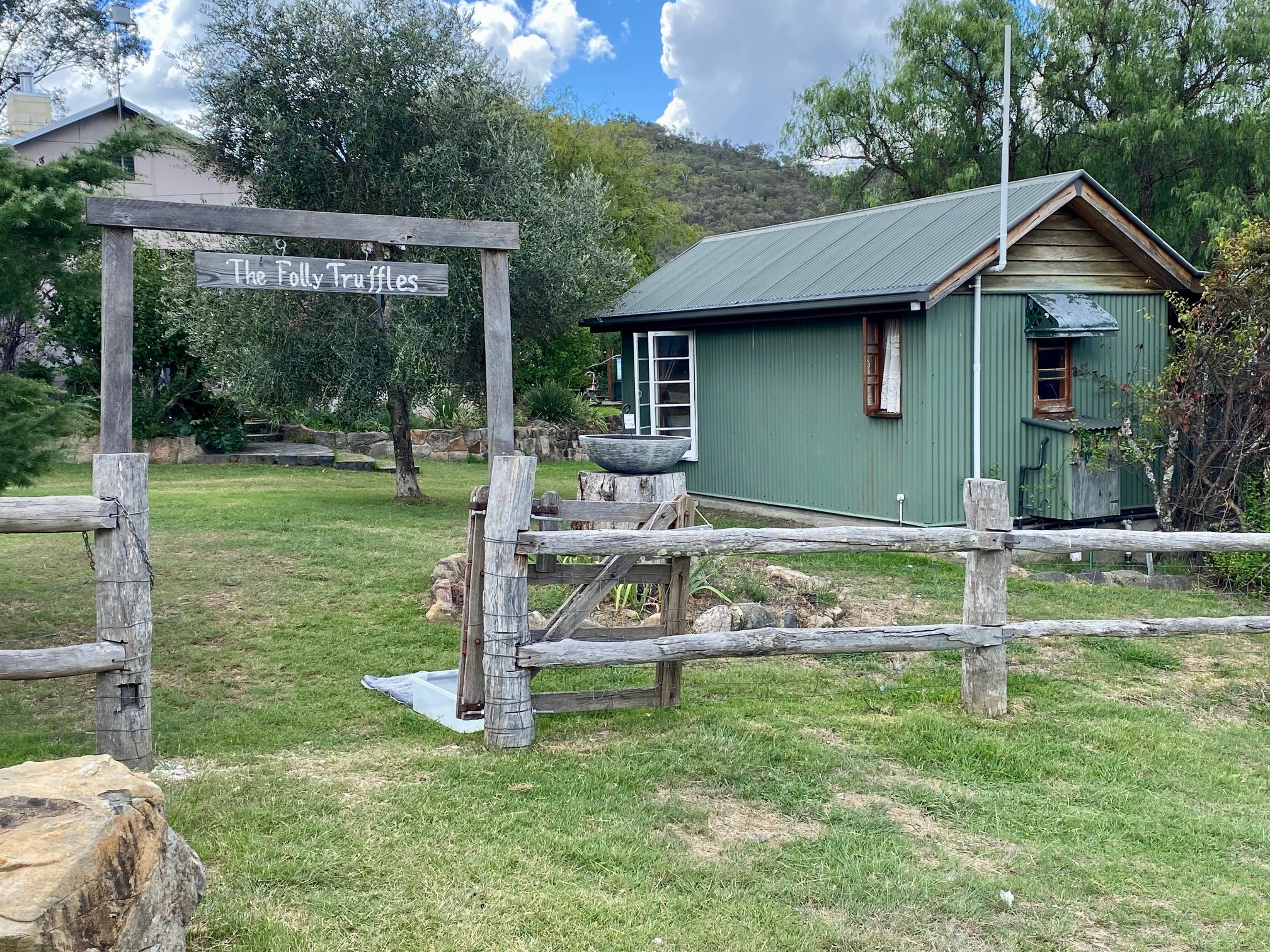
“When they’re immersed in water, the aroma can’t get through the soil. So, the dog can’t smell them.
“There were truffles that we missed over that 12 weeks we were harvesting and hunting for them.”
The Egertons would much prefer dry conditions when they have the capacity to irrigate if necessary.
“The tree will grow better truffles when it has less water because it’s giving more to the truffle and it’s getting more in return from the soil – whereas, if the tree doesn’t have to work as hard, it’s not going to give as much in return,” Maple says.
“It’s just one of those things that you just have to go with. You have good years and you have bad years.
“We shift our thinking, and then we say, ‘Finding rotten truffles is better than finding no truffles at all’.
“Those truffles are staying in the soil and their spores are still reproducing.
“We’re losing out in the sense that we don’t have a crop but our trees are healthy and it’s a great sign for next year.
“So much of what we do is just (a waiting game).”
WHAT IS A TRUFFLE?
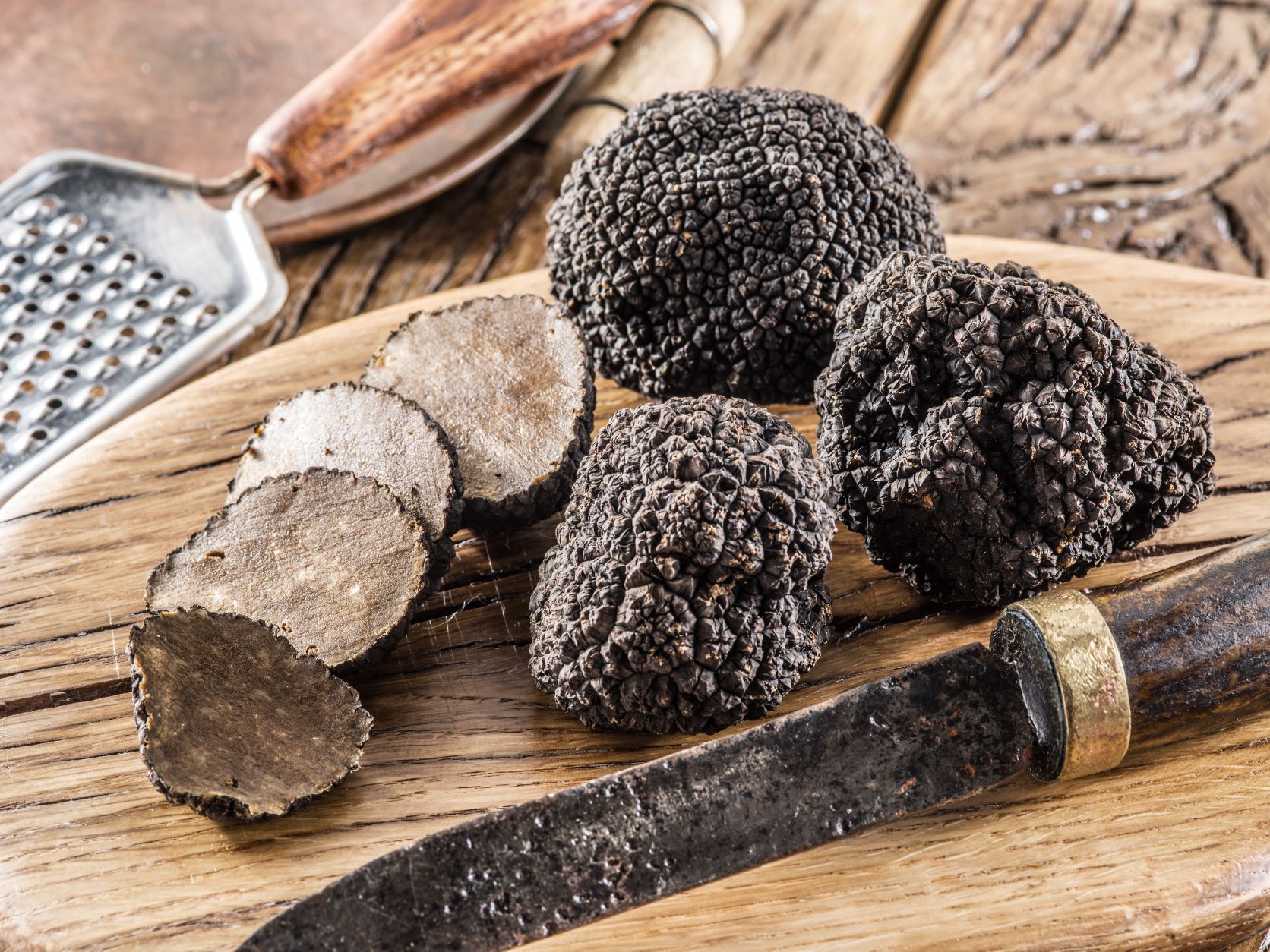
A truffle is a fruiting body that reproduces in a similar way to a mushroom.
The spores of a specialist fungus called mycorrhiza grow on the roots of the host tree. The truffle tree sends out filaments or hairs called mycelium – an essential life support for the fungus.
“The tree produces sugars and carbohydrates in the way of photosynthesis and then it provides that to the roots and therefore to the truffle so the truffle can grow,” Maple explains.
“Truffles like to grow in crappy soil. The rockier the better.
“What the truffle does is, it takes nutrients out of the soil and gives it back to the tree. Think of the two as a unit. It’s a mutually beneficial symbiotic relationship.”
TRUFFLES IN AUSTRALIA
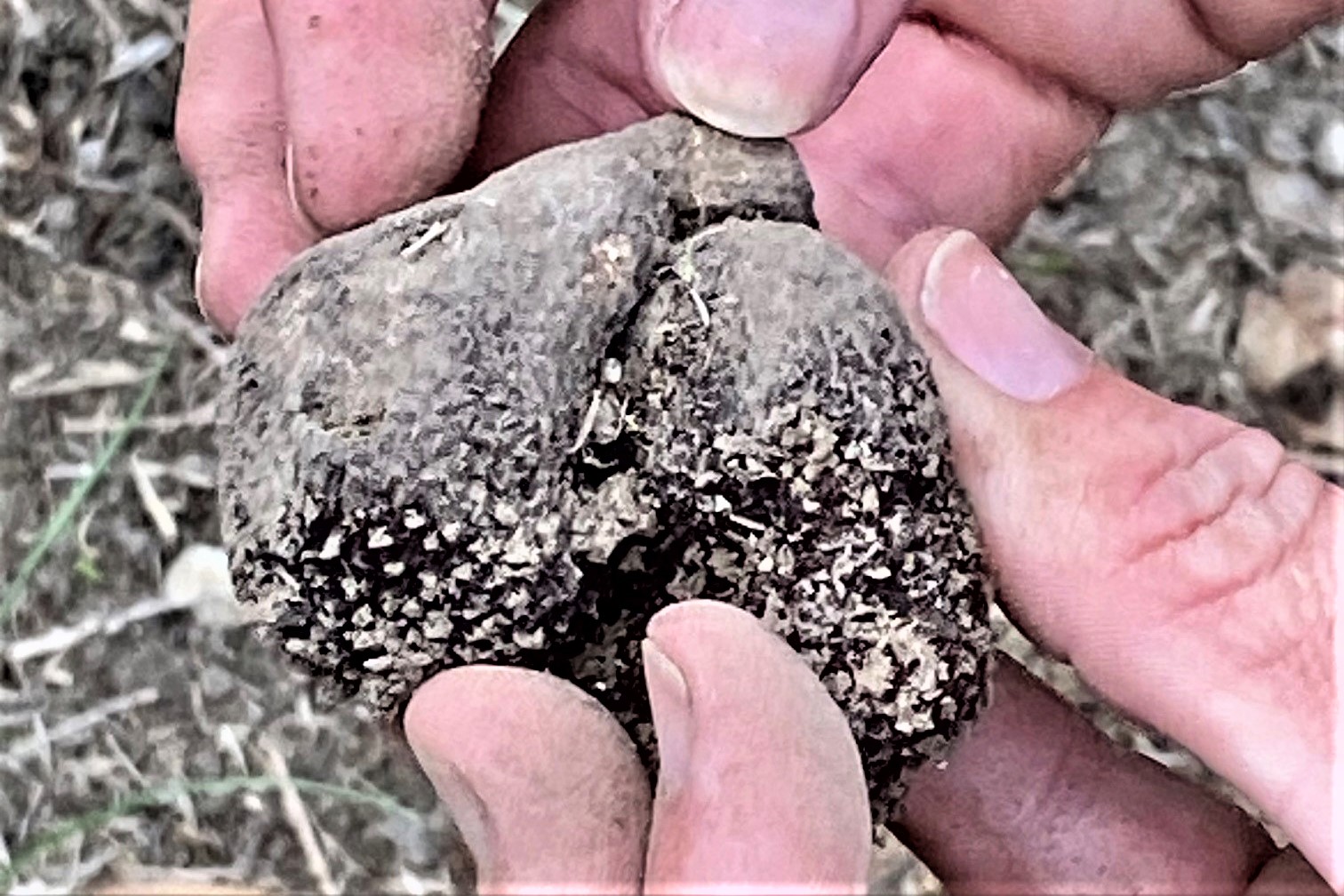
Truffle growing is a relatively new industry in Australia, yet we are now the fourth-largest producer and exporter in the world after France, Italy and Spain.
The first truffieres in Australia were established in Tasmania in 1999.
Just like wine, the individual soil type (all with a high pH level) of various areas will make the truffle smell and taste differently.
Australians love their truffles and while Maple acknowledges the domestic market is fairly saturated, “the export potential is unlimited”.
“The USA will take anything. Asia will take anything,” she says.
“Europe is a little more discerning but the appealing nature of Australian truffles is that we have a clean, green image and we produce in the off-season – truffles are harvested in winter so when it’s our winter, it’s their summer.
“When spring starts, the tree will decide that it is going to reproduce, that spore turns into a fruit and then the fruit will start to grow all throughout summer.
“Round about now (March), when we’re starting to get that cool change through, whatever size they are now is whatever size they will be when they ripen.
“We might have some this big (a small lime) or we might have some the size of a cricket ball or a softball.
“When that cool change comes through and they start to ripen, that’s when their colour will start to darken and you get that beautiful black colour. And that’s as the aroma starts to develop.
“We won’t bother looking for them until the end of June because we know that they just won’t be ripe before then.
“But we’re finding, based on our (three) years of harvests, that our season starts later and finishes later. So, we’ll go right through until mid-September.”
TRUFFLE TOURS, HUNTS AND SALES

The Folly Truffles farmgate for retail sales is at the truffle cottage, 1110 Bents Road, Ballandean. Email info@thefollytruffles.com.au, phone 0488 39 29 79 or visit www.thefollytruffles.com.au.
A Taste of Truffle Tour: About two hours for $100 per person. Walk among the trees of the truffiere where the truffles are grown.
Learn the life cycle of the truffle and the harvest process. The tour ends at the truffle cottage with a glass of local wine.
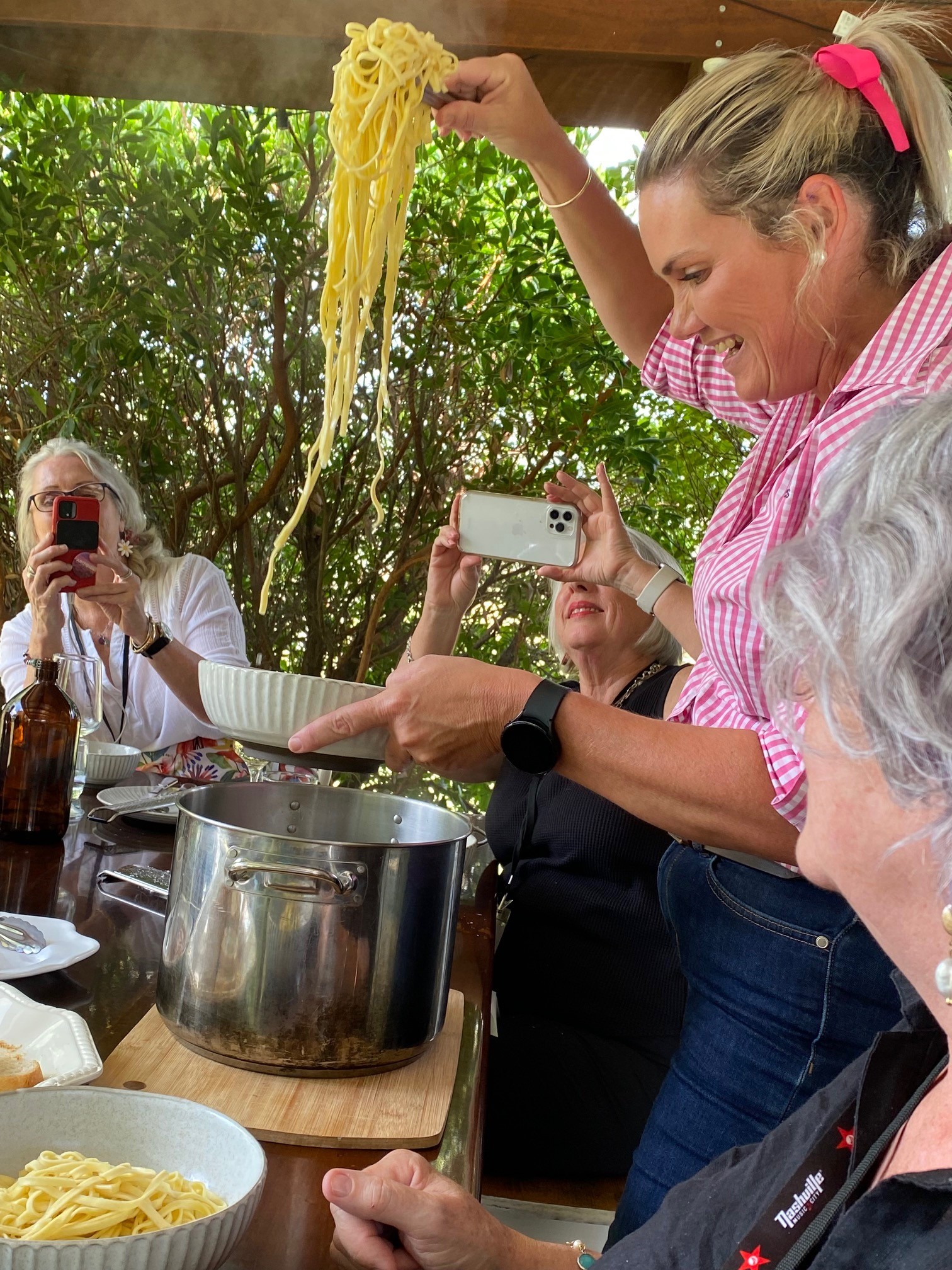
Sample the cheese and browse the literature before Maple demonstrates how to cook a simple truffle pasta.
Tours start at 4.30pm. Numbers are limited to six people.
Weekend truffle hunts: About two hours for $120 per person. Get your hands dirty by joining in the hunt with Barry the dog or shadow the farmer as they dig up a ripe truffle.
The tour provides information on truffles, storage and recipe ideas, and includes a light lunch using favourite local products with Folly truffles paired with local wines, plus tea or coffee. Tours start at 10.30am, with a maximum of eight people per hunt.





